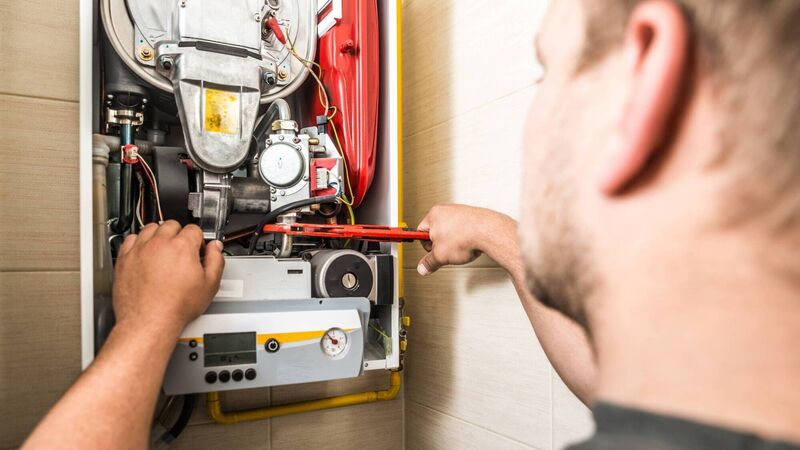Colder temperatures means it's time to have your boiler checked

Set the thermostats to typical temperature for a proper, cold winter’s day – 20C/21C would be about standard.
THE colder, darker months are tapping a damp finger on our shoulder, and it’s time to return to the protection of our central heating systems.
New or old, gas or oil, heat pump or a double boiler — to a solid fuel stove, your central heating system should be serviced once a year, without fail. Nothing else will provide the optimum efficiency and reliability you count on.
If the fee is holding you back, keep in mind that an inefficient boiler will mishandle expensive, fossil fuels and waste as much as 5% -10% of your energy in one year.
You could wait until October, but be prepared to then get in line, as this is the busiest month for boiler service of the entire year.
Even putting a trim on heat pump controls can save you on the escalating prices of electricity. In most cases, what you’ll save will easily exceed the price of a straight service, and you’re also prioritising fire and flood safety in your home.
Heat pumps should be serviced once a year by an approved technician, and failure to do this may invalidate your manufacturer’s warranty. Keep a formal, stamped record of your service. You can expect a full visual check, temperature and system checks, pipework pressure-testing, leak tests and electrical circuit assessments.
Outdoors, the engineer will ensure the evaporator is clean and that the fan blade is free from wind-blown rubbish that could impede airflow and reduce the efficiency of the system. If you have inherited a HP system, this is a great time to ask your service professional about how to finesse available temperature and timing settings on your system. At the other end of the heating spectrum, if you are using stoves, ranges or fireplaces piped through the chimney or a flue – these must be cleaned and checked annually.
With a traditional fossil fuel boiler, do a preliminary run-through ahead of the service call, to see how the system is behaving.
Problems can then be flagged.
Set the thermostats to typical temperature for a proper, cold winter’s day – 20C/21C would be about standard. Turn the central heating on. The boiler should come on instantly. If it doesn’t fire, as they say in the IT Crowd, turn it off, wait a few minutes, and turn it on again.
Still no joy? A modern boiler (made after 2004) will have a reset button. Refer to your instruction manual for that particular boiler and don’t stray into any complex repairs intended for a service agent.
If you’re taking the housing off a gas boiler, you could be playing with your life.
Deals on service by a RGII engineer including up to €1,200 parts and labour cover, and Priority Breakdown Assistance (no call out fee) are priced at €179 with Bord Gais.
These fees, starting at €99 for basic cover, and can be paid off monthly if you prefer, bordgaisenergy.ie
Presuming the boiler does work, note any changes to the familiar sound of the boiler running. If you download the PDF for your particular boiler, you can find an indication of ideal pressure, and this will be visible on the boiler gauge.
Too low or too high? Your annual service by a registered firm using professional tools and technology, can sort out the big and small issues. Just looking around (use a torch if it’s a gloomy situation) and ask are there are sooty deposits anywhere that you had not noticed before? Kerosene boilers kept in outbuildings can get particularly grubby without being noticed.
Dirt can indicate that the fuel is not being fully combusted during the boiler runs, and more worryingly this can lead to petro-chemical fumes including the odourless hazard of carbon monoxide (CO).
For this reason, it’s important to check your CO alarm placed close to the position of the boiler has fresh batteries.
Don’t guess at their vintage, just change them out unless they have a ten-year power source, and put a reminder on the calendar for next year. Use the system button to test the alarm is operational. If you already have solid reservations about the way the boiler is running — stop there, turn it off and schedule a service ASAP.
If the boiler appears fine, and you’re using thermostatic radiator valves when testing your heating, open them up. Fossil fuel for all its dastardly environmental questions, is nothing if not reactive, and you should feel the radiators reaching a hot temperature in around 15 – 20 minutes after turning on the boiler.
At 65C, this is too hot to comfortably lay your hand on the top edge.
If you find that the top of a radiator in any loop (or zone) is cool, in most cases this will just require a “bleed” to let out trapped air from the system. This is not a difficult job, but without your heating engineer on hand, you will need a little confidence.
Air reduces the pressure in the system, and the efficiency of each radiator, so it must be dealt with to allow your water supply to fill the radiator with hot water.
If you don’t have a radiator key, any DIY shop and larger supermarkets stock them.
Root out the boldest family member or ask a handy neighbour or friend. If you’re bleeding more than one radiator, with the system turned off and completely cold, start the radiators downstairs, furthest from the boiler position.
Find the bleed point and place a small towel under the pipe position to protect any vulnerable flooring. Insert the radiator key into the slot and turn it slowly until you hear air leaving the radiator. Avoid turning it more than 90 degrees — less is more. You’ll know the radiator has had a healthy burp and is now full of water again when your fingers get a little wet. Close the bleed valve.
Check your pressure gauge on the boiler and see if a lower pressure has now returned to normal.
Look out for any mucky water when you bleed your radiator. Discoloured water may indicate your system needs what is termed a “power flush” (a sort of colonic irrigation for central heating).
It’s a skilled job performed by a plumber that will clear sludge out of the system and replace it will clean water.
Sometimes the radiator being cold at the base can be caused by sludge too, so again, run your hands over each radiator to check for any fluctuations over its surface.
Dirty water from the central heating can be piped to the outside during a flush, so there’s nothing to get your knickers in a twist over. I had a full flush done last year, and despite the worry, it was relatively clean with no water on the floor. Most wet central heating systems benefit from a power flush every 5-6 years.
Beyond this, if the boiler is not providing hot water between the central heating and the domestic hot supply, some homeowners will dive into a little daring-do, like changing a fuse or cleaning the diverter valve.
If you don’t know what you’re doing, don’t play around with any boiler that’s “kittling”— call in a pro and be particularly careful about gas boilers.
Gas units should only be fixed by an RGII service persons and oil boilers should be placed in the hands of an OFTEC registered technician.
Get it done and remember that every home should feature a fire and CO alarm, properly situated as standard on every floor.

Unlimited access. Half the price.
Try unlimited access from only €1.50 a week
Already a subscriber? Sign in
CONNECT WITH US TODAY
Be the first to know the latest news and updates









